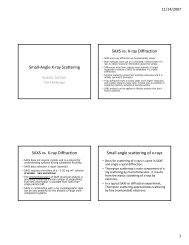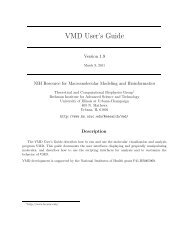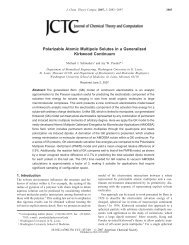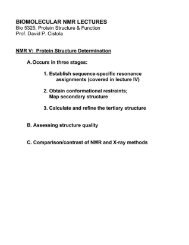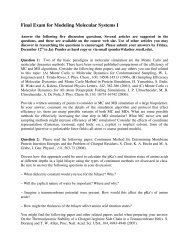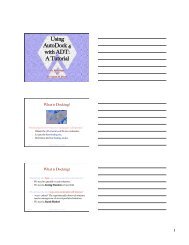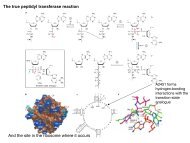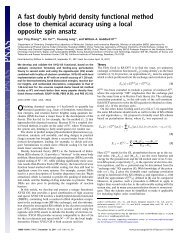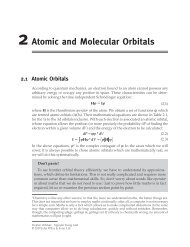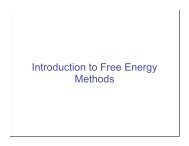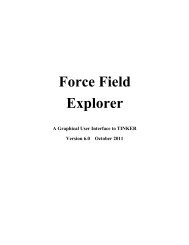AutoDock Version 4.2
AutoDock Version 4.2
AutoDock Version 4.2
You also want an ePaper? Increase the reach of your titles
YUMPU automatically turns print PDFs into web optimized ePapers that Google loves.
This returns a helpful message describing the command line usage of <strong>AutoDock</strong>.-tThis instructs <strong>AutoDock</strong> to parse the PDBQ file to check the torsion definitions, and then stop.-versionThis returns a message describing the version of <strong>AutoDock</strong> being used.Choosing a protocol for your application<strong>AutoDock</strong> provides a number of different methods for doing the docking simulation, and differentmethods might be useful for different applications. This section includes some guidelines forchoosing the best approach.1) Conformation Search. <strong>AutoDock</strong> provides several methods for doing the conformation search.Currently, the Lamarckian Genetic Algorithm provides the most efficient search for generalapplications, and in most cases will be the technique used. It it typically effective for systems withabout 10 rotatable bonds in the ligand. The Genetic Algorithm may also be run without the localsearch, but this is typically less efficient than the Lamarckian GA-LS combination. SimulatedAnnealing is also less efficient that the Lamarckian Genetic Algorithm, but it can be useful inapplications where search starting from a given point is desired. Local Search may be used tooptimize a molecule in its local environment.2) Number of Evaluations. Each of the search methods include parameters for determining theamount of computational effort that will be used in the search. In the GA methods, this parameter isga_num_evals, and in simulated annealing, this is nacc and nrej. The defaults given for theseparameters are typically sufficient for docking systems with 10 or fewer rotatable bonds, andshorter simulations may often be used for systems with very few rotatable bonds. For complexsystems with many more rotatable bonds that this, it is not generally effective to simply increase thenumber of evaluations. Rather, it is best to look for simpler formulations of the system, such asbreaking a large ligand into two pieces and docking them separately, or freezing some rotatablebonds in likely conformations.3) Model for the Unbound Ligand. In order to estimate a free energy of binding, <strong>AutoDock</strong>needs to estimate an energy for the unbound state of the ligand and protein. Several options areavailable for this. By default, <strong>AutoDock</strong><strong>4.2</strong> uses the assumption that the conformation of theunbound ligand and protein are the same as the conformation of the ligand and protein in thecomplex. Because these two conformations are the same, the total contribution of the internalenergy (the interaction of atoms within the ligand or the interaction of atoms within the protein) willbe zero, and reported in line 4 of the energy breakdown in the docking log file.<strong>AutoDock</strong>4.0 used a different model, where the ligand was assumed to be in an extended state insolution, and an energy was calculated for this extended state before the docking simulation wasperformed. This model may be used in <strong>AutoDock</strong><strong>4.2</strong> by using the key word18



